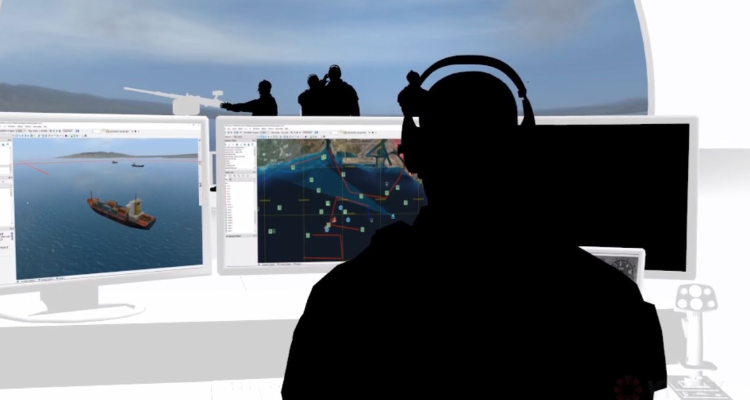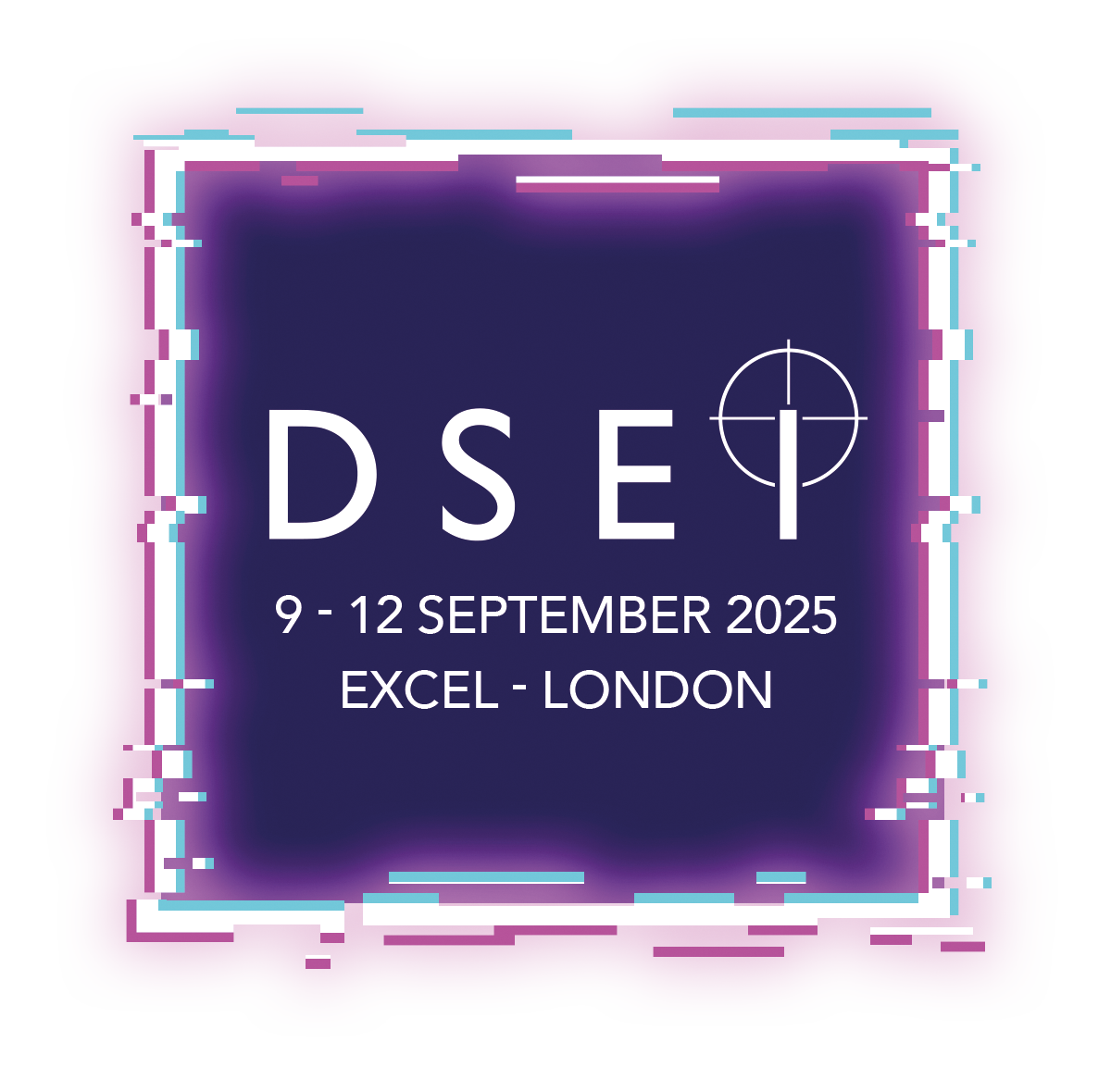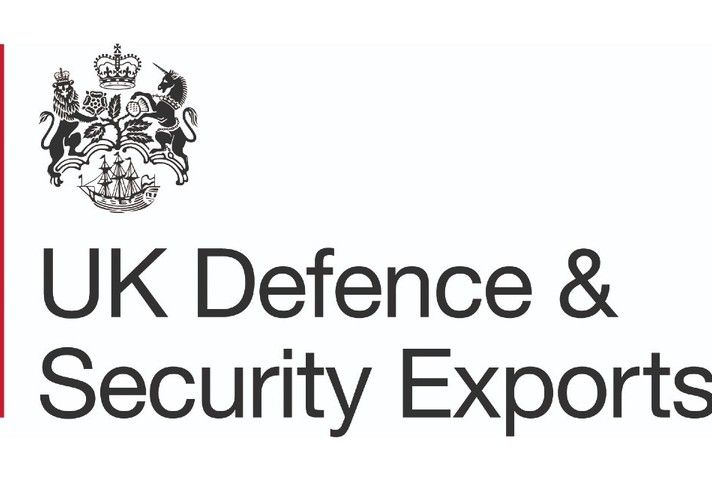Future of the Maritime Defence Sector
- News Article
- Naval

FUTURE OF THE MARITIME DEFENCE SECTOR
The UK is a global leader in defence, safety and security. But to preserve this position it must invest in the future of the maritime defence sector, and that includes the increasing use of 3D modelling and simulation. This eBook discusses what that might look like, and the evolving technologies and industries that support it.
Modelling and simulation tools and Synthetic Training Environment (STE) are playing a vital role in training personnel for lifelong maritime careers and providing support for their continuous professional development. ST Engineering Antycip provides a range of specialist simulation tools and packages to the maritime sector, including: Defence simulators, Ships bridge simulators, Naval mission simulation training, 2D and 3D display solutions and Network design, analysis and testing.
The MAK ONE suite from MAK Technologies, provides a virtual world (a.k.a synthetic environment) where our customers do training, experimentation, mission rehearsal, research and development, and virtual prototyping. For more than thirty years, MAK’s open architecture platform has enabled its customers to build unique, winning simulation solutions. The MAK one platform consists of vehicle and human character simulation, realistic 2D and 3D visualization, distributed simulation networking, and 1st person simulator interfaces. The future of the maritime defence industry also involves technological advances in the use of simulation for the design of autonomous vessels, and in modern ship management systems.
TRAINING THE FUTURE LEADERS OF THE MARITIME SECTOR
In the Maritime 5-year Plan, the UK Government has stated an aim to make the maritime sector an acknowledged world leader in the adoption of digital technologies. However, some areas of the maritime sector are already well advanced in adopting digital technologies. This includes the maritime defence industry and its use of 3D modelling and simulation. Maritime simulation is scaling up. The Warsash Maritime School at Solent University, Southampton, has installed a new ship and port simulation centre.
It is the largest and most sophisticated maritime simulation centre in the UK, and includes full mission bridge simulators, a full mission engine room simulator, and numerous specialist task simulators - all wired for joint exercises. These kinds of advanced simulation tools are the key to unlocking the future of training for key maritime personnel, including its future leaders:
Maritime simulation is meeting the demands of students and trainees to enhance their digital skills and grant them the means to pursue continuous learning throughout their careers
3D modelling and simulation is vital for maritime research, covering crucial areas such as navigational safety and operations, and the human-machine interface
These modelling and simulation tools, along with Synthetic Training Environment, can help to future proof naval cadets, preparing them for the sophisticated, strategic real-world naval operations.
However, despite its advanced technical facets, the critical aspect of this type of maritime training is that it puts the learner at the centre of things. Fully immersive, realistic simulation scenarios challenge the capabilities and hone the operational skills of personnel in a controlled environment. This enables iterative learning that is safe and cost-effective, but also rigorous and demanding. To meet the requirements of the modern maritime defence sector, personnel need training that is relevant to their current working environment, but which can also equip them with future skills for their careers. As the world of maritime becomes more automated and digitally dependent, so the people working in it will need to develop and maintain appropriate skills and knowledge to meet its challenges.
SIMULATING THE FUTURE OF MARITIMES
Simulation is not a new thing in the maritime sector, but with increased automation and widespread adoption of digital technology, it is taking on an even greater importance. What simulation enables people to do is make mistakes that do not have serious, real-world consequences. In real-world scenarios that are increasingly automated, this is a valuable asset for both training and research purposes.
You may be familiar with the concept of autonomous vehicles, but what about autonomous ships? Imagine a scenario where two different autonomous ships from different manufacturers, encounter each other at sea. How will their sophisticated navigational systems interact? What will guarantee that they each make safe manoeuvres, while anticipating the other’s actions? Using 3D modelling and simulation for research purposes, developers can test potential real-world outcomes, mimicking them authentically.
Autonomous systems require rigorous testing to become collision regulation (COLREGS) compliant, and simulation can bring down the time and costs associated with this testing. For unmanned surface vehicles (USVs) in the maritime defence industry, they must be safe in all kinds of conditions, both environmental and involving dense traffic. Therefore, sensor development is critical to how they operate safely and efficiently.
Simulation enables engineers to test the requirements of control systems for USVs, to make sure all the parts of these systems work together properly, in a coordinated fashion. The simulations that engineers and developers use need to be interactive, to enable shared research and close collaborative working. The future of the maritime sector is one of autonomous vessels and connected smart ports. And in this future, cyber security and managing maritime data will become primary concerns.
With security at the forefront of industry concerns, the future of the maritime defence industry is intimately connected to the future of the maritime sector in general. This involves working with, and managing, complex, interconnected and automated systems. Testing these systems, and training the people working with them will mean more need for Synthetic Training Environment and sophisticated modelling and simulation tools.

SMARTER SHIPS OF THE FUTURE
What does a modern Ship Management System (SMS) require? The digital transformation of the maritime industry means that the search is on for streamlined solutions that will bring new efficiencies and help to future-proof systems, vessels, equipment and personnel.
Since 2012, ST Engineering has developed and designed its own ship management system; NERVA SMS. It enables the integration of platform systems, bringing centralised control, monitoring and coordination to different platform sensors and systems. And it allows operators to do this remotely. NERVA SMS guarantees secure, efficient operations across a wide variety of vessels, giving ship operators precise remote control and monitoring in real-time. This type of comprehensive human-machine interface capability is set to become integral to how smarter ships of the future operate. A key feature of NERVA SMS is its Sensemaking module. This combines data analytics with machine-learning technologies to provide predictive analysis. It shifts the entire emphasis of maintenance away from being reactive to being preventative. The Sensemaking system has a decision support engine, which gives preventative action recommendations to the operator. NERVA SMS assures the quality of its system by using marine-graded and proven products. It is designed to meet International Maritime Organisation (IMO) requirements, as well as other major international classifications. This ship management system is customisable for most types of vessel, and represents the intersection point between process automation and shipbuilding expertise.
MAK CAPABILITIES FOR THE MARITIME SECTOR
MAK Technologies provides the MAK ONE suite of simulation tools to create a virtual world (also known as a ‘synthetic environment’) where our customers do training, experimentation, mission rehearsal, research and development, and virtual prototyping. This synthetic environment is created by sharing a common representation of the physical world, often called a ‘terrain database’, and connecting new and existing ship and weapon system simulators into a distributed simulation network, where each simulator presents its status for the benefit of all of the other simulators. The MAK ONE suite is based on a modular and open systems architecture. Some of the benefits of modeling and simulation are captured in this e-book. MAK ONE includes these components:
Simulation engine – VR-Forces is a simulation engine that can model hundreds of systems and can generate scenarios to simulate busy shipping straits or naval combat situations
Visualisation engine – VR-Vantage IG is MAK’s image generation system for rendering realistic 3D displays throughout any maritime simulator
First-person role playing simulators – VR-Engage enables the trainee to become an active protagonist in an assigned role, operating vessels, equipment or arms
Interoperability – MAK ONE networking tools enable legacy or new simulators to connect, using standard or custom protocols so they can interact within the synthetic environment
A MAK ONE maritime simulator provides realistic ocean environments, replicating ocean waves, wind and other weather elements, and how they interact with vessels at sea. The user of this simulator experiences these elements and components as if they were physically present, operating a vessel or its defence systems. MAK simulators for individual vehicles and vessels can interoperate with simulators in any combination of air, sea and ground environments.
MAK Technologies has an extensive database of generic models of different ships, submarines, vehicles, aircraft and human characters, and behaviour models that define how they interact within the environment. This database can contribute to any Synthetic Training Environment.
Recently, Boeing selected MAK and ST Engineering Antycip to provide the core technology for its Defence Operational Training Capability Core System and Services contract - Gladiator, the UK’s networked air collective training, capability development, and mission preparation initiative. Basically, a system designed to support multiple complex training scenarios, which will be able to run simultaneously or independently of each other.
CONCLUSION
The maritime defence sector has a long history, but it is continuing to evolve. Technology is a key part of how it is evolving and embracing a dynamic future in the process. The maritime simulation capabilities that ST Engineering Antycip and MAK Technologies are developing, designing and supplying support this evolutionary shift. Aligned with change, but also helping to drive it, simulation is an integral part of the future of the maritime defence sector.
-
DSEI 2023: Royal Navy To Set Up In Receive Mode, To Support Partnering Against Future Threats
04 Sep 2023 Dr Lee WillettThe UK Royal Navy (RN) will have significant presence at the DSEI 2023 exhibition, which is taking place at ExCeL London on 12-15 September. It is also seeking to grasp the engagement opportunity that ... -
In an increasingly contested maritime environment, staying at the forefront of innovation is vital to enable the UK and its allies to promote peace, security, and prosperity in the maritime domain. Te ...
-
Extending Maritime Special Operations Capability
18 Jul 2023 JFD Global...by optimising Tactical Diving Life Support System ergonomics and duration. Tactical Diving in the 21st Century When facing peer or near peer adversaries, the viability of inserting a fully equipped ...

)
)
)

